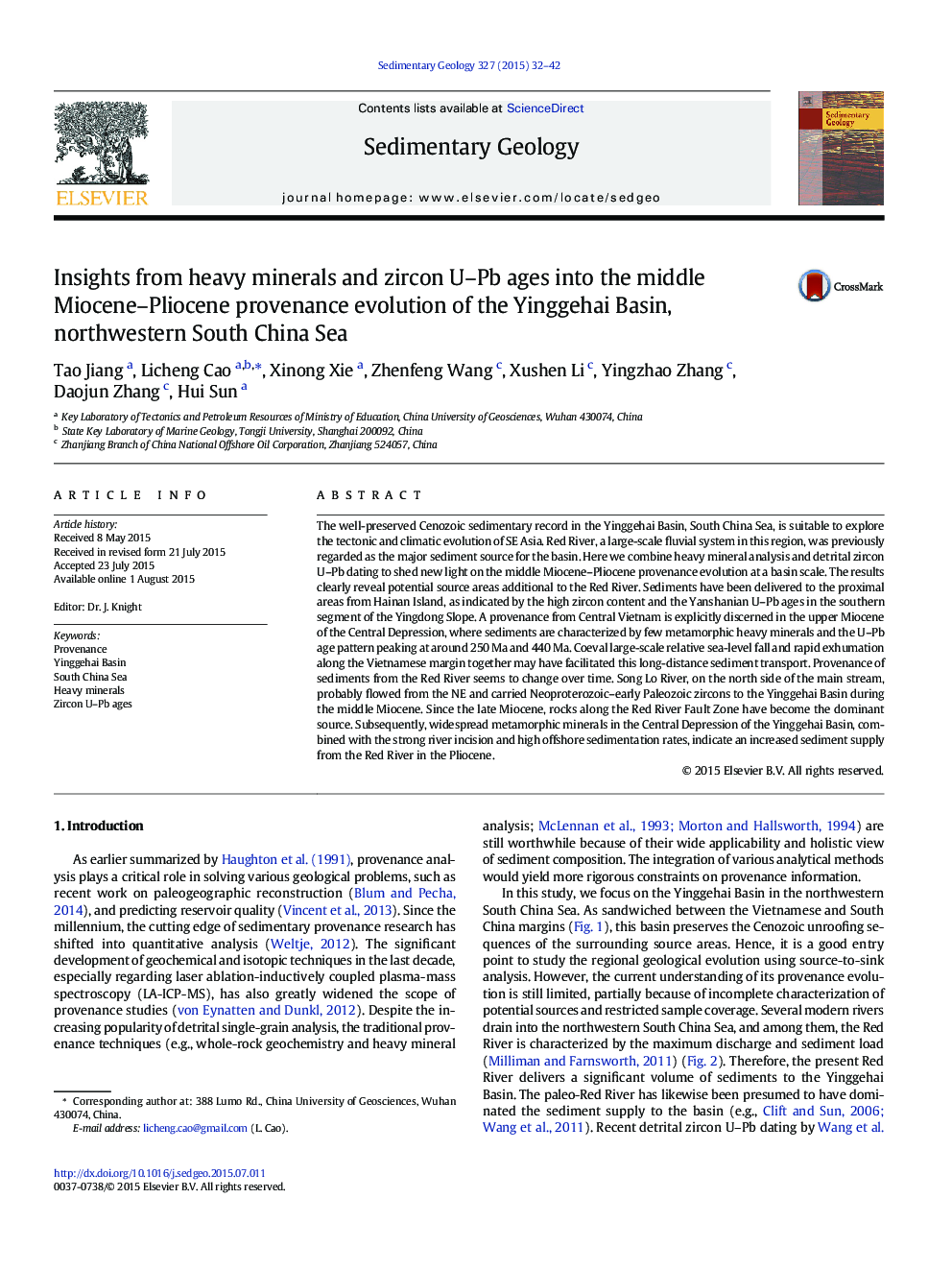| Article ID | Journal | Published Year | Pages | File Type |
|---|---|---|---|---|
| 4689179 | Sedimentary Geology | 2015 | 11 Pages |
•Combined provenance analyses are used for the middle Miocene–Pliocene sediments.•Hainan Island continuously delivered zircon-abundant sediments to the proximal areas.•A source from Central Vietnam is clearly observed in the upper Miocene strata.•A coupled drainage evolution of Pearl River and Red River in the Miocene is proposed.•The provenance from the Red River probably intensified during the Pliocene.
The well-preserved Cenozoic sedimentary record in the Yinggehai Basin, South China Sea, is suitable to explore the tectonic and climatic evolution of SE Asia. Red River, a large-scale fluvial system in this region, was previously regarded as the major sediment source for the basin. Here we combine heavy mineral analysis and detrital zircon U–Pb dating to shed new light on the middle Miocene–Pliocene provenance evolution at a basin scale. The results clearly reveal potential source areas additional to the Red River. Sediments have been delivered to the proximal areas from Hainan Island, as indicated by the high zircon content and the Yanshanian U–Pb ages in the southern segment of the Yingdong Slope. A provenance from Central Vietnam is explicitly discerned in the upper Miocene of the Central Depression, where sediments are characterized by few metamorphic heavy minerals and the U–Pb age pattern peaking at around 250 Ma and 440 Ma. Coeval large-scale relative sea-level fall and rapid exhumation along the Vietnamese margin together may have facilitated this long-distance sediment transport. Provenance of sediments from the Red River seems to change over time. Song Lo River, on the north side of the main stream, probably flowed from the NE and carried Neoproterozoic–early Paleozoic zircons to the Yinggehai Basin during the middle Miocene. Since the late Miocene, rocks along the Red River Fault Zone have become the dominant source. Subsequently, widespread metamorphic minerals in the Central Depression of the Yinggehai Basin, combined with the strong river incision and high offshore sedimentation rates, indicate an increased sediment supply from the Red River in the Pliocene.
